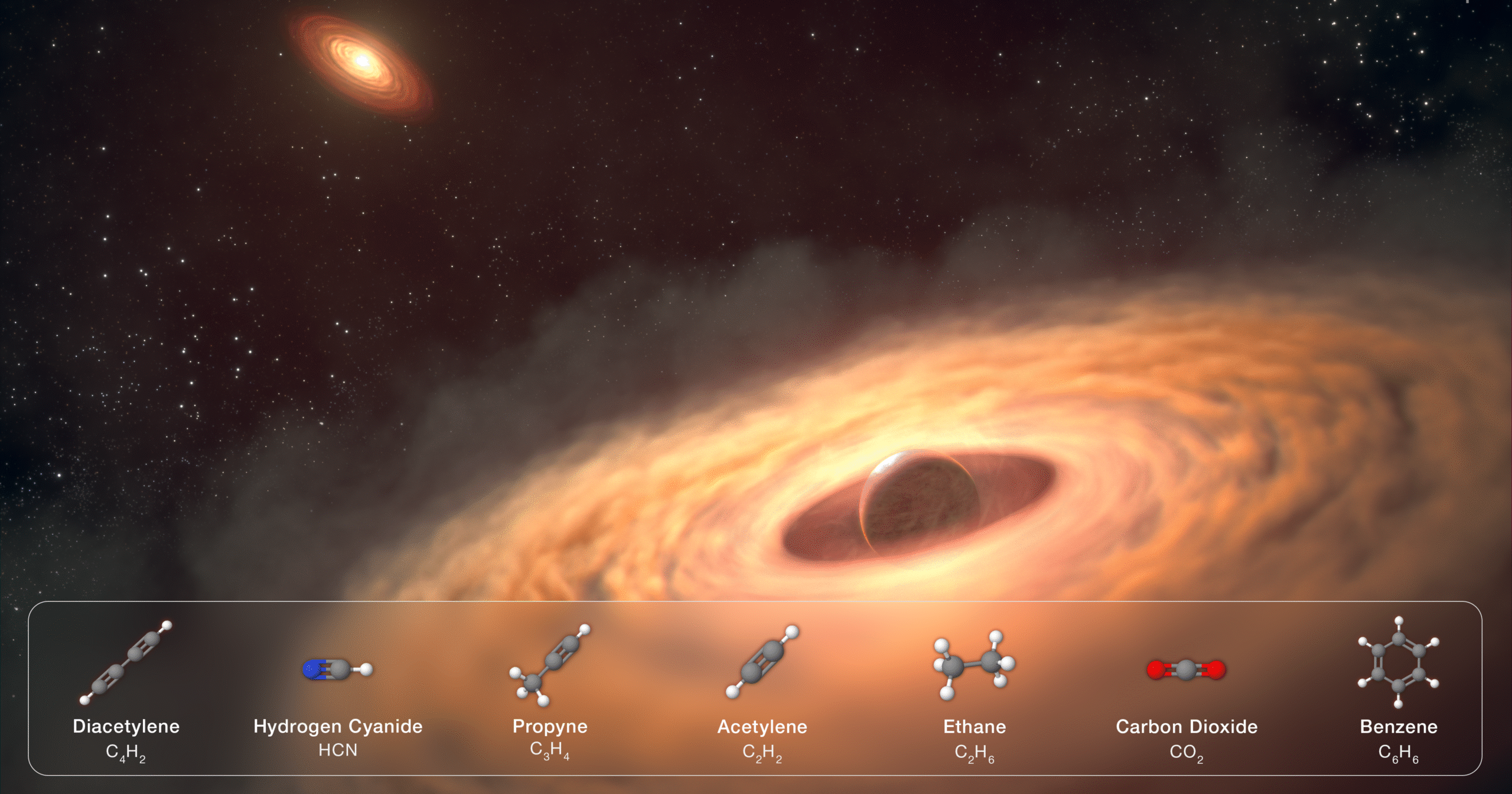NASA believes it may have found the ‘building site’ for moons, located about 625 light years from Earth.
The US space agency says its James Webb Space Telescope is currently studying the chemical and physical properties of what it thinks may be a moon-forming disk encircling a large, and young, exoplanet, named CT Cha b.
(Exoplanets is the name for planets that exist outside our solar system).
The carbon-rich disk is a possible construction yard for moons although none have been detected so far, the agency says.
The results of its studies were published in The Astrophysical Journal Letters.
“We can see evidence of the disk around the companion and we can study the chemistry for the first time,” says co-lead author of the study, Sierra Grant of the Carnegie Institution for Science in Washington.
“We’re not just witnessing (a) moon formation — we’re also witnessing this planet’s formation.”
Main lead author Gabriele Cugno, of the University of Zurich, says: “We are seeing what material is accreting to build the planet and moons.”
NASA EXPLAINS
NASA says the young star that the exoplanet orbits is only two million years old and still ‘attracting’ circumstellar material (deep space matter like gas, dust, asteroids and fragments) for its growth.
But the circumplanetary disk discovered by the Webb telescope is not part of the larger accretion disk around the star; the two objects are 46 billion miles apart, NASA says.
The agency says that moons likely outnumber planets, and some might be habitats for life, and this discovery can be used in studying our solar system’s birth over four billion years ago.
NASA says a closer look at infrared observations of CT Cha b turned up signs of molecules within the circumplanetary disk.
“We saw molecules at the location of the planet so we knew that there was stuff in there worth digging for and spending a year trying to tease out of the data. It really took a lot of perseverance,” Grant says.
The team discovered seven carbon-bearing molecules within the planet’s disk such as acetylene (C2H2) and benzene (C6H6). This carbon-rich chemistry is in contrast to that of the disk around the star where researchers found water but no carbon.
OUR SYSTEM’S MOONS

A circumplanetary disk has long been believed to be the birthplace of Jupiter’s four major moons, NASA says.
“We want to learn more about how our solar system formed moons. This means that we need to look at other systems that are still under construction; we’re trying to understand how it all works,” says Cugno.
“How do these moons come to be? What are their ingredients? What physical processes are at play, and over what timescales?
“Webb allows us to witness the drama of moon formation and investigate these questions observationally for the first time.”
The James Webb Space Telescope is the world’s premier space observatory and run by NASA, the European Space Agency and Canadian Space Agency.
MORE NASA NEWS: Sights set on moon base, nuclear-power base on Mars






